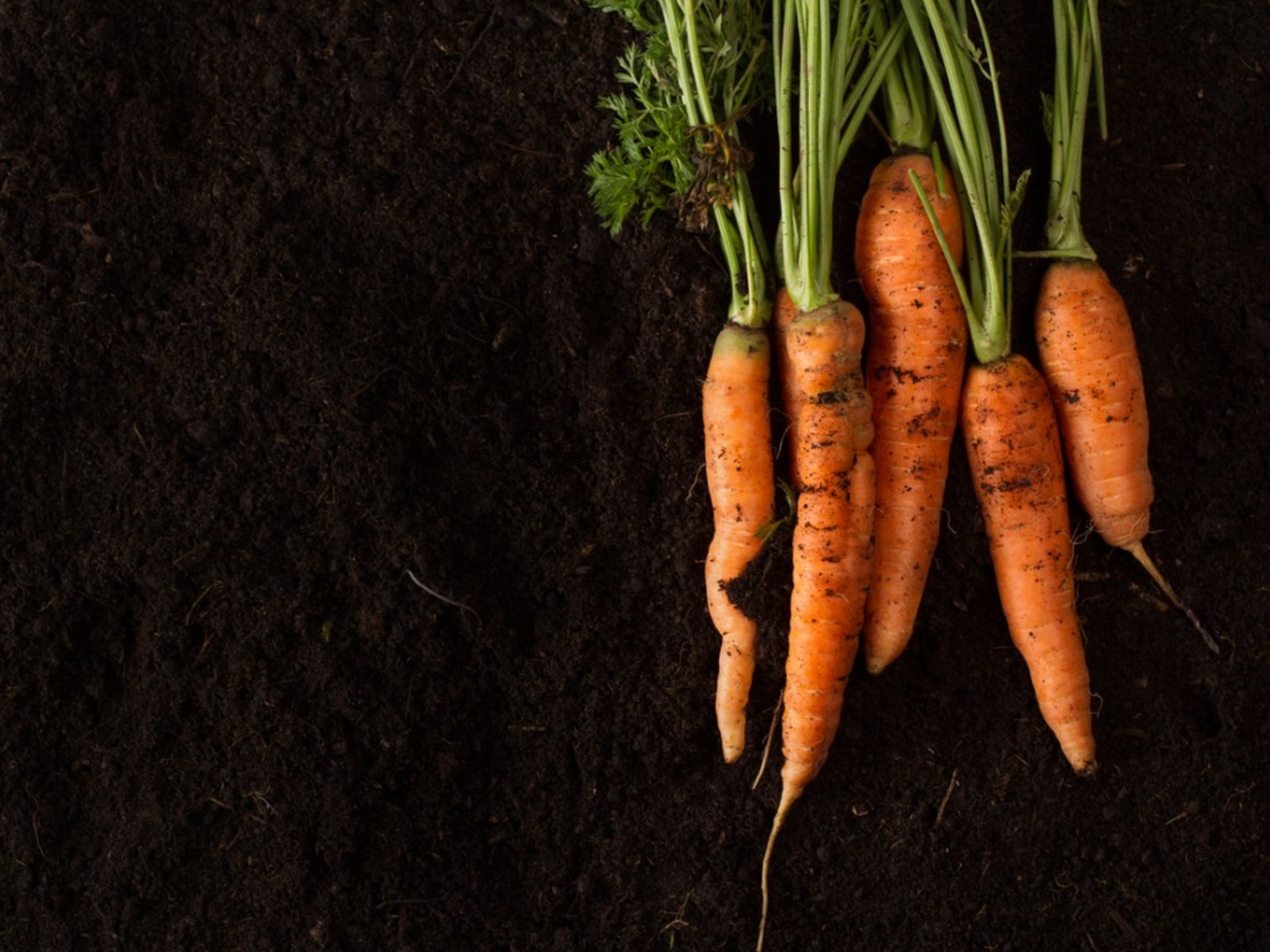Carrot Soil Profile: How To Fix Your Soil To Grow Healthier Carrots


You may have seen them -- the crooked, forked roots of carrots that are mutated and malformed. While edible, they lack the appeal of properly grown carrots and look a bit alien. This is the result of improper soil for carrots. Before you even think about sowing the tiny seeds, you need to know how to fix your soil and avoid stunted and distorted roots. Growing healthy carrots requires loose soil and a heavy addition of organic amendments. A brief carrot soil profile will give you the knowledge to produce a bumper crop of perfect, straight vegetables, perfect for a fresh snack, and a host of other recipe applications.
Best Soil for Carrots
Root crops, like carrots, are best sown directly into a prepared seedbed outside. The temperatures that promote germination are between 60 and 65 degrees F. (16-18 C.). The optimum soil for carrots is loose, free of debris and clods, and either loamy or sandy. Plant seeds early in spring to avoid summer heat, which will turn the roots hard and bitter. Prepare your seed bed as soon as the soil is soft enough to work, by tilling and adding organic amendments. You also need to check the drainage. Carrots that grow where soil is too moist will put out hairy little roots that destroy the overall vegetable texture. A moderate soil that is neither too acidic nor alkaline and has a pH of between 5.8 and 6.5 provides the best conditions for growing healthy carrots.
How to Fix Your Soil
Check the pH of your soil to build a good carrot soil profile. Carrots don't produce well when soil is acidic. If you need to sweeten the soil, do so the fall prior to planting. Garden lime is the usual method of changing the pH to a more alkaline level. Follow the usage amounts on the bag carefully. Use a tiller or garden fork and loosen soil to a depth of at least 8 inches (20 cm.). Remove any debris, rocks, and break up clods so the soil is uniform and soft. Rake out the bed smoothly after all the larger chunks have been removed. While you are working the soil, incorporate 2 to 4 inches (5-10 cm.) of leaf litter or compost to help loosen the soil and add nutrients. Add 2 to 4 cups (473-946 ml.) of all-purpose fertilizer per 100 feet (30.5 m.) and work that down into the bottom of the bed.
Growing Healthy Carrots
Once the seedbed has been improved, it is time to plant. Space seeds 2 to 4 inches (5-10 cm.) apart and plant under ¼ to ½ inch (6 mm. to 1 cm.) of soil. Carrot seeds are tiny, so spacing can be achieved with a seed injector or just thin them after the seeds have germinated. Keep the surface of the soil lightly moist so it does not crust. Carrot seedlings have difficulty emerging if the soil is crusty. Side dress the rows with ammonium nitrate at the rate of 1 pound per 100 feet (454 g. per 30.5 m.) of row once the plants are 4 inches (10 cm.) tall. Your nice, loose soil for carrots is also favorable for many weeds. Pull as many as you can and avoid deep cultivation near your plants, as the roots may become damaged. Harvest carrots 65 to 75 days from planting or when they reach the desired size.
Gardening tips, videos, info and more delivered right to your inbox!
Sign up for the Gardening Know How newsletter today and receive a free copy of our e-book "How to Grow Delicious Tomatoes".

Bonnie Grant is a professional landscaper with a Certification in Urban Gardening. She has been gardening and writing for 15 years. A former professional chef, she has a passion for edible landscaping.
-
 Get Ready For A Summer Of Hummers! Grow These Full Sun Hummingbird Plants and Flowers
Get Ready For A Summer Of Hummers! Grow These Full Sun Hummingbird Plants and FlowersIf you’re lucky enough to enjoy a sunny backyard, make sure you are maxing out on your pollinator opportunities and grow these full sun hummingbird plants and flowers
By Tonya Barnett
-
 12 Lush Alternatives To A Lawn For Sustainable Spaces
12 Lush Alternatives To A Lawn For Sustainable SpacesAlternatives to a lawn are beautiful and also beneficial to your local ecosystem and its pollinators. Explore our top picks for plants to replace grass.
By Tonya Barnett